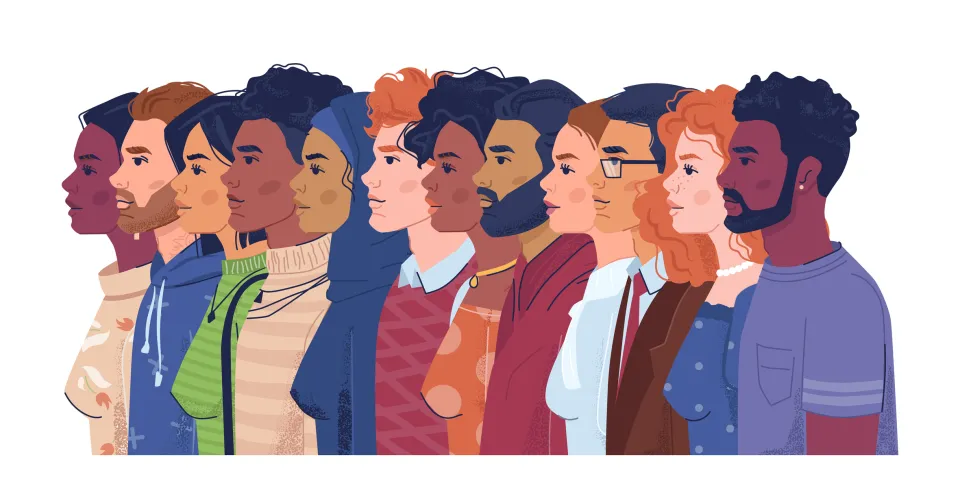Latest 
 Career Development Denise Alexander
Career Development Denise Alexander
Recent Blog Posts


Imagine you are giving a business presentation to a large group of people. You think you are doing a great job, but no one in the audience is looking at you. No matter how you try to engage with this group of students, they continue to look down at the floor.
Given your knowledge and cultural experience, you may think that this is a bad sign. You may wonder if your presentation is not interesting enough or if your group is disengaged. However, what if you learned that it is culturally normal for some groups of people not to look at someone whom they view as the authority figure as a sign of respect? This was the circumstance that diversity, equity and inclusion expert Terri Howard found herself in when she gave a presentation to a group of Innuit students in Canada.
In her latest T.R.U.E. Talk with Terri, “Cultural Competence,” Terri Howard focuses on cultural competence and how it impacts the world around us. No one has a perfect understanding of different cultures, but that should not deter individuals from learning more about the world around them. Howard invited Heather Gilvary-Hamad, a senior student services advisor for Herzing University, to shed some light on this question and other cultural issues.
In working to define the complexity of cultural competence, Howard called out the seminal work of Terry Cross et all in 1989 in their research study, “Toward a Culturally Competent System of Care”. This study defined cultural competence as a set of behaviors, attitudes and/or policies that come together to facilitate effective work in situations that are universally applicable across multiple systems.
What does this set of cultural competency behaviors include? Howard says that five essential elements contribute to a system's ability to become more culturally competent. They are:
It is important to note that cultural competence does not merely mean people of different racial and ethnic groups. Cultural differences can be broadened to include socioeconomic and environmental disadvantages in addition to gender, sexuality, religious and language inequalities.
Cultural competence in the classroom or on campus starts with being respectful and polite to everyone. No matter whom you are dealing with, you want to meet people where they are and make sure that you are respecting their backgrounds, boundaries and how they came to the position they're in.
You want to treat people the way you want to be treated while understanding that that might look different and different scenarios. For example, someone may want emotional support to talk through their problems, while others may want you to support them from a distance. It is okay to make mistakes and to ask questions so long as you are genuinely trying to be kind and respectful towards others.
Gilvary-Hamad often works with students that are in academic distress and struggling with some personal issues. It is imperative in those situations to get to know these students because you can’t truly know what someone is going through without interacting with the student directly.
“I have never fully understood the impact of hurricanes,” Heather Gilvary-Hamad explained, “I grew up in Indiana, so I am familiar with tornadoes, but I didn’t know what a hurricane can do to a community, a household and a student until I came to Herzing University. While I am living my life, some people are struggling to get by.”
A hurricane may not be an example of cultural competence, but it perfectly describes how external forces can change how people relate to one another. You have no idea what kind of struggles someone else is facing and what external forces are in their control or how they relate to their situation.
We may only know in part what obstacles or hurdles a student faces. However, as Gilvary-Hamad expressed, “we don't usually face struggles alone, even though we sometimes feel that way. We carry our ancestors in our background and our teachers and mentors with us in any struggle and so they impact our culture. By being culturally competent I'm more effective in helping them through whatever issue they're facing.”
Diversity is a part of your backyard. Try to engage with people in your community or find materials that force you to evaluate life from another perspective. Something as simple as learning more about what issues and delights we might find in different regions, religions and ethnic or racial backgrounds. There is a very big world out there with a lot of perspectives. You never know when you may be the one who is a part of a minority group, be it gender, ethnicity, religion, language, or any other subset of the population, so try to treat others as you want to be treated.
Gilvary-Hamad explained how her understanding and identity have also changed. Heather wears a scarf on her head that kind of indicates a little bit about her diversity. “I didn't grow up with this, so this was a change for me. Then after I put on the scarf I found out I needed hearing aids, so one of my points of diversity covers up another! That makes me who I am, and it makes me more empathetic and has helped me to grow in my understanding!”
Openness and willingness to have a cultural competency dialogue is an ongoing journey. We should be continually open to saying things like, “I hadn't thought of this”, “I hadn't realized that,” or, “this is new to me, can you explain more?” One piece of advice is to recognize that most people come at cultural competency with an interest in doing the right thing. Trusting that people want to be the polite people that they are and just sometimes they are trying to navigate their way through.
There are many ways by which we can increase our capacity to be effective in our interactions with others. Tolerance is not always optimal, in fact, tolerance usually means that you're simply putting up with someone undesirable. Cultural competence goes beyond putting up with differences and instead involves being appreciative, affirming and inclusive of all cultural backgrounds.
BLS pay estimates calculate the median annual wage for various occupations. Per the BLS the median wage for an occupation is: "The wage at which half of the workers in the occupation earned more than that amount, and half earned less. Median wage data are from the BLS Occupational Employment and Wage Statistics survey." Bureau of Labor Statistics (BLS), U.S. Department of Labor, Occupational Outlook Handbook 2024. BLS median wage estimates do not represent entry-level wages and/or salaries. Multiple factors, including prior experience, age, geographic market in which you want to work, and degree level and field, will affect career outcomes, including starting salary and earnings as an experienced employee. Herzing neither represents that its graduates will earn the median salaries calculated by BLS for a particular job nor guarantees that graduation from its program will result in a job, promotion, particular wage or salary, or other career growth.
Get the latest news you need to know, from study hacks to interview tips to career advancement. Have it delivered right to your inbox biweekly.